How Asian countries are strengthening their air defenses: there is no limit to the diversity of approaches
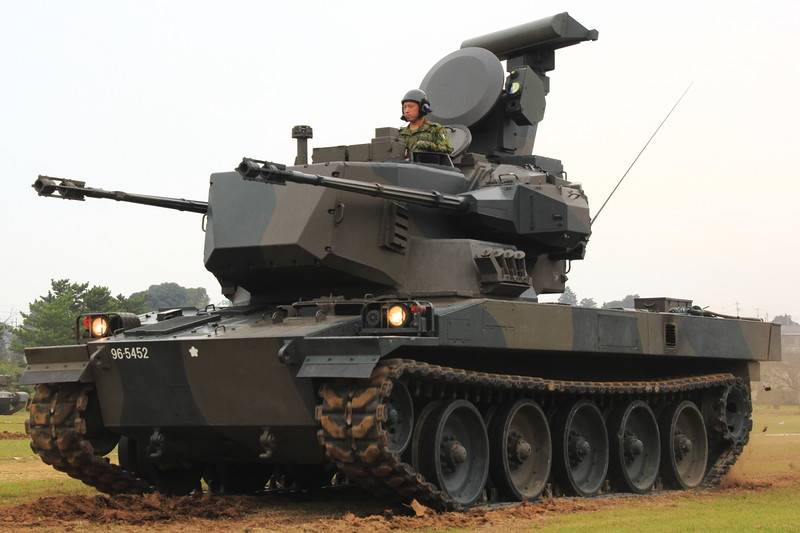
Anti-aircraft self-propelled unit Tour 87 Antiaircraft Automatic Weapon entered service with the Japanese self-defense forces in the year 1987; before 2002, a total of 52 platforms were manufactured. The machine weighs tons of 44 armed with two 35-mm guns Oeriikon KDA
With a few strange assorted obsolete air defense systems, mainly of Russian origin, India has a great need for such systems. In 2012, the Indian army recognized that 97% of its air defense assets were outdated, and this was aggravated by bizarre purchasing processes.
General view of the installation ZU-23-30М1
The Indian Army is currently implementing several programs, including anti-aircraft artillery, near-air defense systems and short-range ground-to-air missiles. The replacement of guns, 40 mm L / 70 and 23 mm ZU-23-2, was suspended after Rheinmetall Air Defense was blacklisted in 2012 year.
However, Bharat Electronics Ltd (BEL) is currently upgrading L / 70, and Punj Lloyd is upgrading ZU-23-2. BEL also upgraded 48 tracked complexes ZSU-23-4 Shilka.
The Defense Procurement Council in 2015 approved the army’s claim for 2,6 billion dollars in towed 30-mm anti-aircraft installations with a range of 4 km. The Department of Defense issued a request for information to local companies in May 2014, after unsuccessful attempts to attract foreign companies. However, this process has almost completely stalled and the request for proposals has not yet been released. The winner will receive a contract for the 1102 guns, which will be manufactured within 15 years; The first 428 systems will need to be delivered in the first five years.
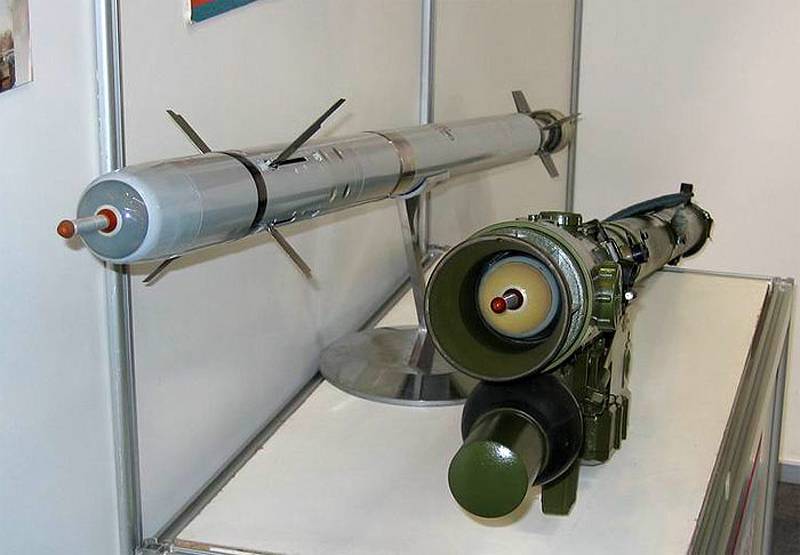
Russian complex 9K338 "Igla-S" company KBM
Hot air short range
As for short-range air defense, three applicants were selected for the supply of 5175 missiles and 1000 dual launchers, including the Russian 9K338 Igla-S complex from KBM, Mistral from MBDA and RBS 70 NG from Saab. India wants to have portable systems with dual launchers or complexes mounted on machines. This activity to replace the Igla-M systems in service is dated 2010 for a year, and the tests were carried out from 2012 to 2017 a year.
In November 2017, the Ministry of Defense announced that 9K338 “Igla-S” complex of KBM company took the last place in the list of applicants. The Igla-S complex did not perform well in some field trials, at least in those in which it participated. Problems consisted in unsuccessful launches and captures of targets, as well as in the absence of a good sight. However, Igla-S remained in the competition, the Ministry of Defense did not take any punitive measures, and in January 2018, the technical compliance of all three applicants was announced. In May, the head of Rosoboronexport stated that “after the opening of tenders, the Igla-S complex turned out to be more cost-effective compared to its competitors.”
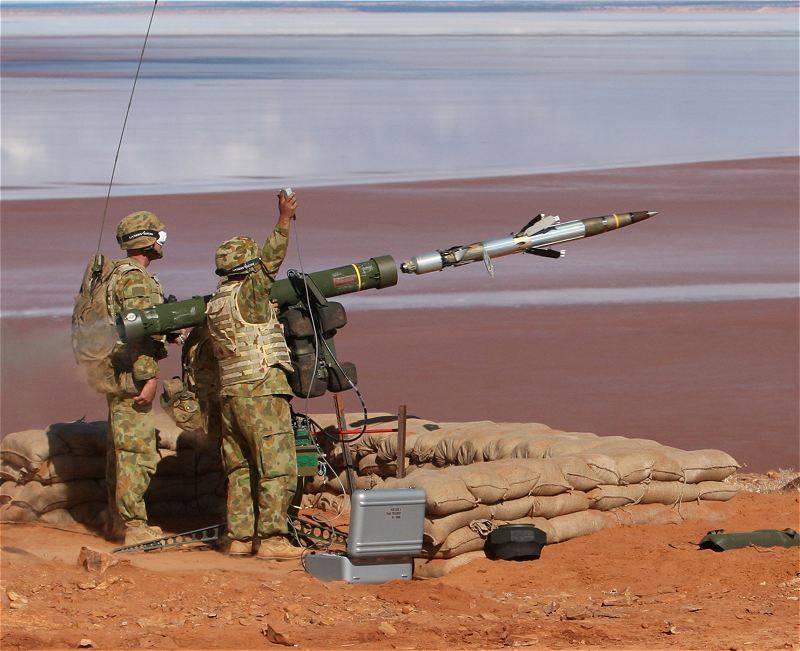
Saab RBS 70 MANPADS are popular in the region. In the photo the training of soldiers of the Australian army
A Saab spokesman emphasized the ease of use of RBS 70 NG, saying that soldiers can very quickly learn how to handle it. The company also stressed that its missile guided by a laser beam cannot be interfered with. The company has teamed up with local Bharat Forge to participate in this competition. Options RBS 70 are in service with the armies of Australia, Indonesia, Pakistan, Singapore and Thailand.
A representative from MBDA explained: “The MBDA offer is fully compatible with Indian requirements and best in class due to the very high rocket performance in all conditions and against the entire set of threats, as well as the highest probability of failure, as confirmed by tests in India. India has already chosen the Mistral complex to equip its Light Advanced Helicopter and Light Combat Helicopter helicopters, so using Mistral also in near-air defense tasks can give India great price, logistics and operational advantages. ”
The MBDA company also noted that the Mistral of the “shot-and-forget” type “is different in that each of its main subsystems has been significantly improved and improved based on the feedback and comments of the operators”.
Mistral portable anti-aircraft missile system designed to destroy low-flying helicopters and enemy aircraft
The Russian company KBM was declared the preferred applicant, and at the next stage, cost negotiations will be held. Then, as prescribed by the rules, before signing any contract, the transaction must be approved by the security committee. The signing of the contract was expected at the end of last year, but so far there is no information on it.
Of the quantities purchased, 2315 missiles will be purchased ready-made, and the rest must be collected under license from the Indian enterprise Bharat Dynamics Ltd (BDL). Of these, 1260 rockets will be supplied to the BDL company for a nodal assembly, 1000 rockets will be completely disassembled and 600 pieces will be completely manufactured according to the Seller’s documentation.
At a recent exhibition, DefExpo, the Russian company presented its new Verba, one of the new MANPADS, but the Indian rules do not allow the product to be changed at the entrance of the tender. The victory of the Igla-S complex - especially after India ordered the C-9 complexes - could lead to the imposition of sanctions by the United States in accordance with the Law on Countering America's Enemies through Sanctions.
At the beginning of 2017, the Ministry of Defense canceled the short-range ground-to-air missile competition, deciding to purchase two additional regiments of local-produced Akash missiles. The Indian Army needs eight regiments with 20 missiles of quick-response missiles to replace the Soviet-era 9K33M2 Osa complexes.
Let us return to the Indian Air Force, which replaces the X / NUMX-mm L / 40 and 70-3 ZU-23-23 installations protecting their airbases. This is realized in the framework of the “Buy and make in India” competition worth 2 billion dollars, announced in December 15 for cannons with a range of 2017 km. The total need is 3,5 guns (244 battery), fire control radar and 61 shells. Only local companies were invited to participate in the competition, although they can be combined with foreign partners. The winning platform will be put into service over the 204000 years and integrated with the Indian Air Force control systems. In October, Israel Aerospace Industries (IAt) announced a contract worth 7 million dollars for its Sky Capture system with an “army of an Asian country”. Despite the refusal to name the customer, it is very likely to talk about India. The IAI solution is a command and control system for anti-aircraft guns, including fire control radars and opto-electronic systems. If necessary, it can control short-range ground-to-air missiles and laser irradiation warning systems.
The Malaysian Army’s VAMTAC is equipped with the Starstreak complex in the RapidRanger configuration. The platform is served by the commander, the driver and the operator-gunner
Sky and stars
The Starstreak high-speed rocket with a range of 7 km and a speed of more than 3 mach numbers has proven itself in Southeast Asia, where three countries have adopted this laser-guided missile developed by Thales UK. In 2015, Malaysia has ordered an unnamed number of Lightweight Multiple Launchers Next Generation Launchers (LML-NG) of RapidRover and RapidRanger configurations worth 130 million dollars; The cost of the contract included Starburst retired missiles.
Global Komited supplies Weststar GK-M1 4x4 machines on which LML installations are installed, each with three Starstreak missiles ready for launch. Meanwhile, RapidRanger is installed on URO 4x4 VAMTAC armored cars, which can be accompanied by mechanized units without any problems. The system also includes portable Control Master 200 radars and Control View C2 workstations. Malaysia has ordered six RapidRanger units, each with four ready-to-launch rockets. The crew of three people serves the installation RapidRanger: the commander of the driver and the operator.
In October, at the Johor training ground, Starstreak missile launches were conducted as part of acceptance tests. These missiles will receive the 32nd artillery regiment, a Malaysian air defense unit fleet and Air Defense Division of the Malaysian Air Force. The artillery regiment will receive the complex in three configurations, while the rest will receive RapidRover and LML configurations.
In 2012, Thailand became the first customer of Starstreak complexes in the region, ordering a second batch for their army in 2015. These launchers are installed on light vehicles 4x4.
Starstreak LML launcher on a Weststar GK-M1 Weapon Platform vehicle
The command of the air defense of the Thai army is also armed with anti-aircraft guns. Officially, Rheinmetall's Skyguard 3 complexes were adopted in August, later Thailand ordered four Doppler radars with 20 km range and 8 twin towed ONerli GDF-35 guns in 007 year.
The GDF-007 can fire AHEAD (Advanced Hit Efficiency and Destruction) air exploding shells, which are equipped with 152 heavy tungsten striking elements. In addition, the arsenal of anti-aircraft artillery includes guns M42 Duster, M163 Vulcan, towed M167 Vulcan, Bofors L / 70 and Chinese 57-mm Tour 59 and 37-mm Tour 74.
In addition to Thailand, guns from the Oerlikon GDF family also adopted several other Asian countries: the Singapore Air Force has the GDF-001 and GDF-003 models: the Malaysian army with the GDF-003 model; the Indonesian army has GDF units; Pakistan has the model GDF-005; South Korea bought the model GDF-003; and Taiwan has the order of 50 GDF-003 guns (later upgraded to the GDF-006 configuration), connected to the 24 Skyguard radars.
Rheinmetall supplied the first Skyshield modular system with an 35-mm turret gun by the Indonesian Air Force in 2014. Rheinmetall received a contract for the supply of six systems, ammunition, logistics and integrated MANPADS to protect air bases. Indonesia installed a cannon on six-wheeled trucks. In connection with Jakarta’s growing concern about Chinese claims in the South China Sea, the country has installed several Oerlikon Skyshield complexes (photo below) on the islands of the Natuna Archipelago (Bunguran).
The Indonesian army is armed with an eclectic mix of near-air defense systems, including Polish Grom complexes (installed on Land Rover), Mistral, Chinese OW-3 and Swedish RBS 70. In 2003, the army also acquired the Giant Bow II 23 anti-aircraft guns from China. During an exercise in May 2017, one of these cannons fired indiscriminately as a result of a breakdown, killing 4 and injuring a 8 soldier.
Indonesia is also in service with the Starstreak system. Having issued an order in 2014, Jakarta received enough missiles to equip five batteries as part of its ForceShield system. The system was purchased in both configurations: RapidRanger on the URO VAMTAC and RapidRover machines on the Land Rover Defender machines.
For the first time, the Indonesian Marine Corps conducted live firing of the new Norinco anti-aircraft towed gun in August 2016. The second air defense battalion is equipped with four such 35-mm paired installations of the Tour 90 (export designation PG99) and one AF902 fire control radar, but it is possible that some more of these systems will be purchased. The gun has a range of 4000 meters and is serviced by a calculation of five people.
The Philippines is very limited in the capabilities of near-air defense, but as part of its modernization program Horizon 2, conducted in 2018-2022 years, the Philippine army wants to get two batteries of MANPADS. However, the purchase is unlikely to happen before 2021-2022 of the year due to the change of priorities. The Philippine Air Force also has requirements for ground defense systems.
In the Singapore Air Forces, the SPYDER-SR complexes of the Israeli company Rafael installed on the truck replaced the Rapier complexes. The missiles of the new complex has a range of 20 km. The first system installed on the MAN truck was shown in the middle of 2011, and full alert was announced in July of 2018. Singapore is also armed with the Igla, Mistral and RBS 70 complexes (some are installed on V-200 vehicles). The composition of the mechanized complex "Igla" includes a launcher with six missiles mounted on the chassis of the tracked armored vehicle M113. There are two variants of this complex: the Weapon Fire Unit is equipped with the “Igla” missile launchers, and the Integrated Fire Unit is also equipped with an additional radar. By the way, Vietnam and India are also armed with Israeli SPYDER complexes.
Big defense
China is able to offer for export a staggering number of ground-based air defense systems, many manufactured by Norinco Corporation. For example, it is currently promoting its new SWS2 self-propelled anti-aircraft complex. It includes a 35-mm turret gun and four ground-to-air missiles based on the TY-90 model, mounted on the VN1 chassis. These missiles with a maximum range of 6 km are used in the Yi-Tian anti-aircraft complex based on the WMZ551 6x6 chassis.
The VN1 is known in the Chinese army under the designation Tour 09; the Chinese military appears to be using the SWS2 variant with a six-barreled 30mm cannon. Images of this type of machine in an exercise in Guangzhou province first appeared in local the news in 2013 year.
SWS2 self-propelled anti-aircraft complex based on VN1 machine
As for the tracked anti-aircraft self-propelled units, here it is necessary to note the latest model PGZ07, which is in service with the Chinese army. This system with twin 35-mm guns was put into service in the 2011 year. Air defense vehicles have target tracking radar at the front of the turret and surveillance radar at the rear. The previous PGZ95 tracked installation, designed to operate in conjunction with the combat units of the Chinese army, 22,5 tons of mass has 4 25-mm gun and 4 short-range missiles QW-2 with a radius of 6 km.
In 80, China copied the French rocket Crotale and gave it its designation HQ-7. The new version has a range of 17 km. Another HQ-6A ground-to-air missile is also based on a European rocket, this time on the Italian Aspide. It has a range of 18 km.
The HQ-6А missile is part of an armament complex deployed on a LO2000 truck; In addition to these missiles, a seven-barreled 30-mm gun and the corresponding radar are installed on it. China also copied the Tor-M1 complex, bought from Russia, creating the tracked HO-17 complex.
Chinese industry has created several different MANPADS. For example, an infrared-guided missile QW-2 is a copy of the Igloo-1 rocket with a range of 6 km. China Aerospace Science Industrial Corporation (CASIC) manufactures the QW family, including the newer QW-3, QW-18 and QW-19; some of them were sold to countries like Sudan and Turkmenistan. In addition, the weapons of the Chinese army are MANPADS HY-6 / FN-6 and HN-5A / B. MANPADS FN-16, sold to Cambodia, is an updated version with a range of 6 km; in Bangladesh, the FN-16 complex is produced under license.
New Chinese MANPADS QW-19
Movement to the East
For more than 20 years, the Taiwanese army has been operating the Avenger complex based on the HMMWV armored car, but it will soon be replaced by the Antelope complex developed by the National Institute of Science and Technology Chung-Shan. Antelope - four Tien Chien I infrared-guided missiles mounted on a Toyota car - is already a standard 9 km tactical air defense system. The Taiwanese army requested a similar system several years ago, but later rejected the request due to a change in the priorities of the army units aviation.
Japan is armed with several local development systems, including the 52 87 tracked ZSU Toure with two 35-mm guns. Adopted by the Japanese Self-Defense Forces in 1987-2002, the Tour complex 87 is an analogue of the German Gepard complex.
MANPADS Toure 91 development company Toshiba is similar to the complex FIM-92 Stinger American production. The Japanese army also uses the same rocket in the Xnumx Kin-Sam Tour complex. It is similar to the HMMWV-based Avenger system; The launcher with 93 missiles ready for launch is mounted on the chassis of the Toyota 8x4. The Ture 4 Tan-SAM complex, based on a truck, was refined into a Tan-Sam C complex with improved electronic protection and all-weather capability. However, the latest air defense system is the 81 Tour (or Tan-SAM Kai II) from Toshiba, in this case the 11 rockets are mounted on the Isuzu 4x6 truck.
Self-propelled anti-aircraft gun with dual 30-mm automatic gun K30 Biho
Hanwha from South Korea manufactures the K30 Biho Hybrid for their army. It consists of four KP-SAM Shingung missiles (Chiron export name) from LIG Nex1, two 30-mm cannons and a radar mounted in the turret. More 200 systems were converted from the original Biho system, which had guns, but did not have missiles. The army is also armed with Chiron missiles, which are part of the MANPADS on a tripod. Equipped with a two-color IR homing head, this rocket has a range of 5 km.
In addition, Hanwha is partnering with Hyundai Rotem to produce the Antiaircraft Gun Wheeled Vehicle System, an 8x8 Biho Hybrid turret. In 2020, it is planned to take this complex into service. The machine weighing 26,5 tons is equipped with an optoelectronic target tracking system from Hanwha with an infrared camera, a TV camera and a laser rangefinder capable of tracking Drones 2,5x2 meters in size at a distance of 5 km.
Also, the South Korean army is armed with a tracked complex Chunma, which is armed with 8 missiles ready for launch 9 km. The country's army still exploits the 20-mm Vulcan cannon mounted on a car or a trailer.
CEA Technologies presented its first CEATAS radar at Land Forces 2018 in Adelaide. Radar with AFAR short / medium range, mounted on an armored car Thales Hawkei, is proposed for the project Project Land 19 Phase 7B, the purpose of which is to take on the supply of the Australian army ground air defense systems.
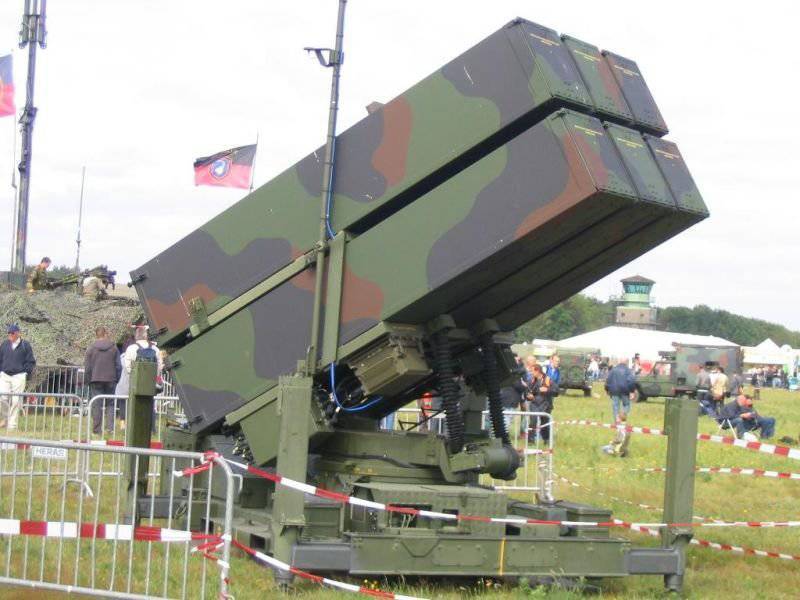
Kongsberg / Raytheon NASAMS anti-aircraft missile system
The NASAMS anti-aircraft missile system (National Advanced Surface-to-Air Missile System) manufactured by Kongsberg and Raytheon was selected for this project in April 2017 of the year as part of the program to create an integrated air defense and missile defense system. Approval of this project is expected in 2019 year, the government issued a request for a tender, in which the main contractor is the company Raytheon Australia.
A spokesperson for CEA Technologies said that the CEATAS radar is dual-band, but declined to name its range. He stressed that at the moment there is no other non-rotating radar with an electronically controlled beam of this size and range. The development of this solution aims to reduce the risks associated with the project; The prototype is currently undergoing evaluation tests in the army.
It will also be interesting to see whether Australia will install anti-aircraft missile systems on the Boxer Sx8 chassis, which the army has chosen for its reconnaissance regiments. In October, Rheinmetall demonstrated its Oerlikon Skyranger cannon (with the Oerlikon Revolver Gun 35-mm turret gun) mounted on the Boxer chassis, which can be attractive to this country's armed forces.
In September last year, Saab Australia received permission to upgrade the RBS 70 army complexes to the latest standard Identification Friend or Foe Mode 5. This modernization of the missiles, the Giraffe AMB radar and the command and control system will improve the accuracy of identification of Australian, American and other allied units and thereby reduce the likelihood of an erroneous opening of fire on their own forces. Given that NASAMS provides mid-range air defense, Saab believes that its RBS 70 NG complex in Australia has good prospects.
Materials used:
www.shephardmedia.com
mod.gov.in
kbm.ru
saab.com
www.mbda-systems.com
www.hanwha.com
www.cea.com.au
www.wikipedia.org
en.wikipedia.org
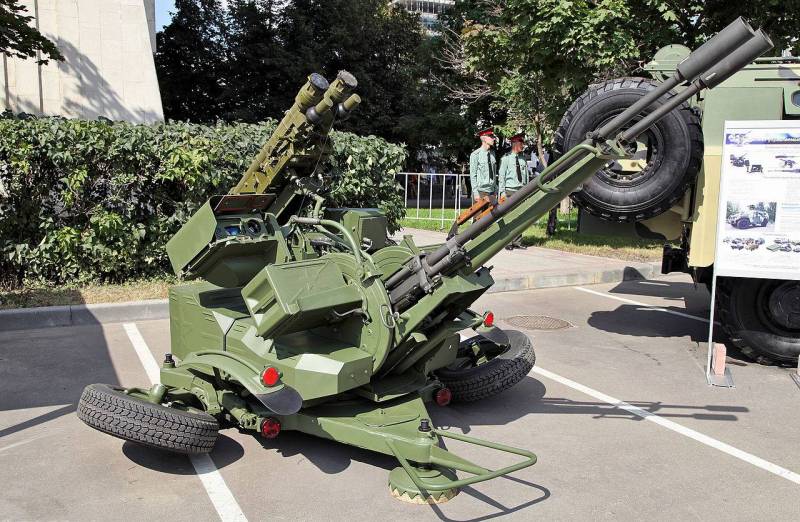
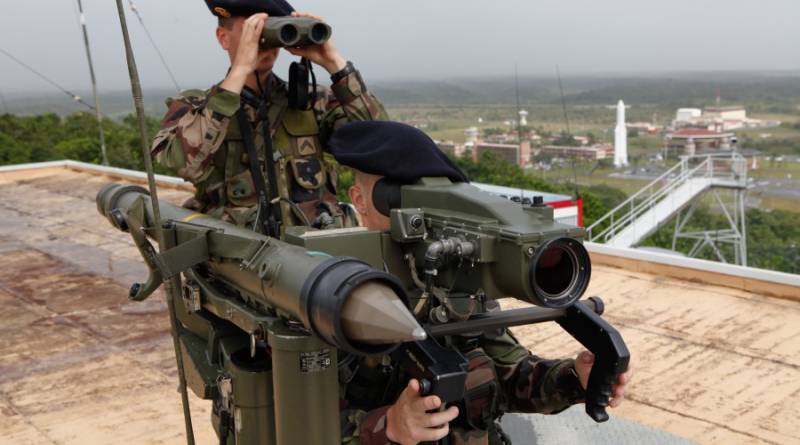
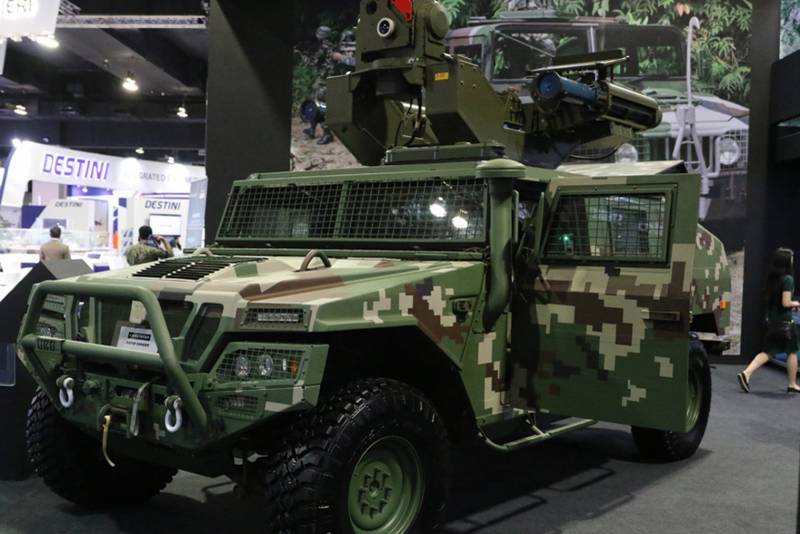
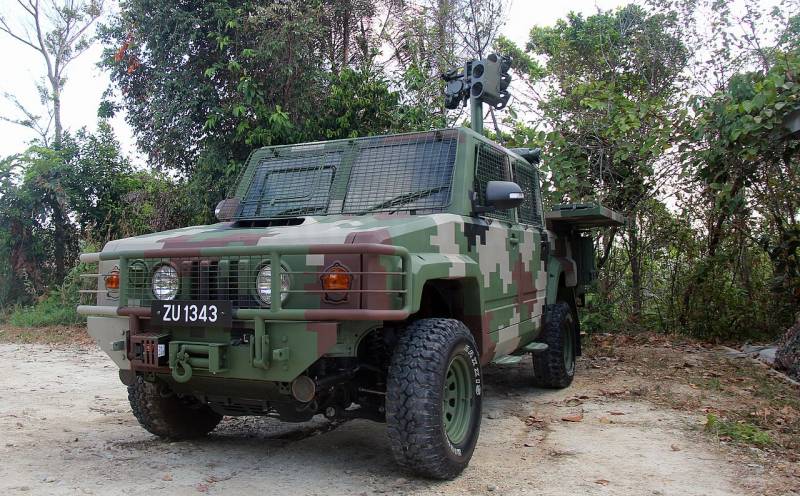
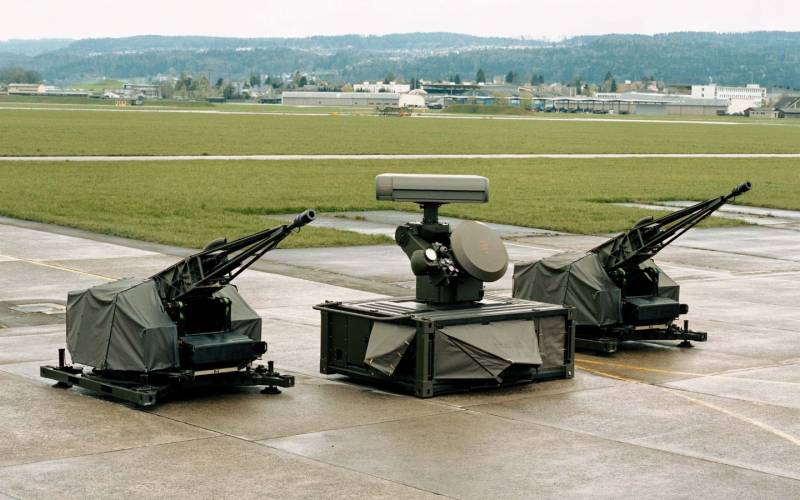
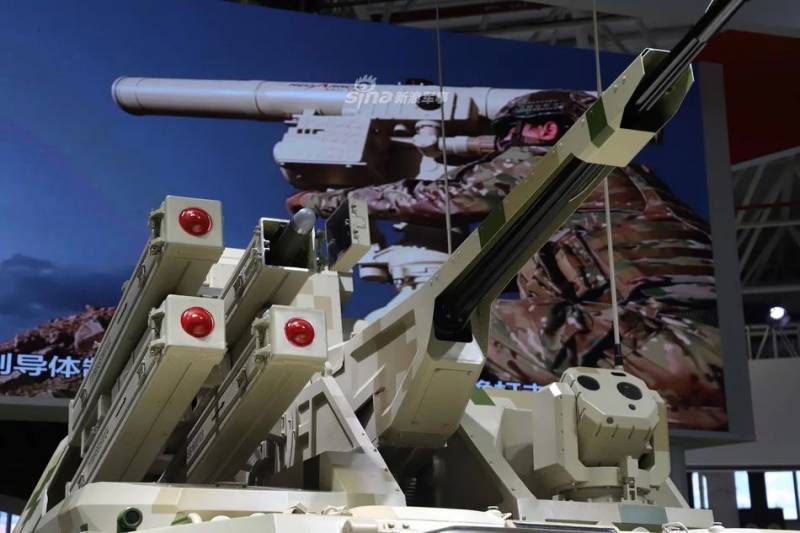
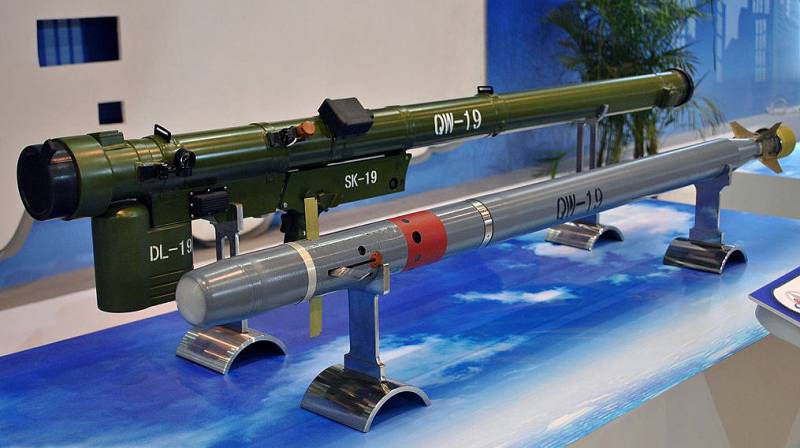
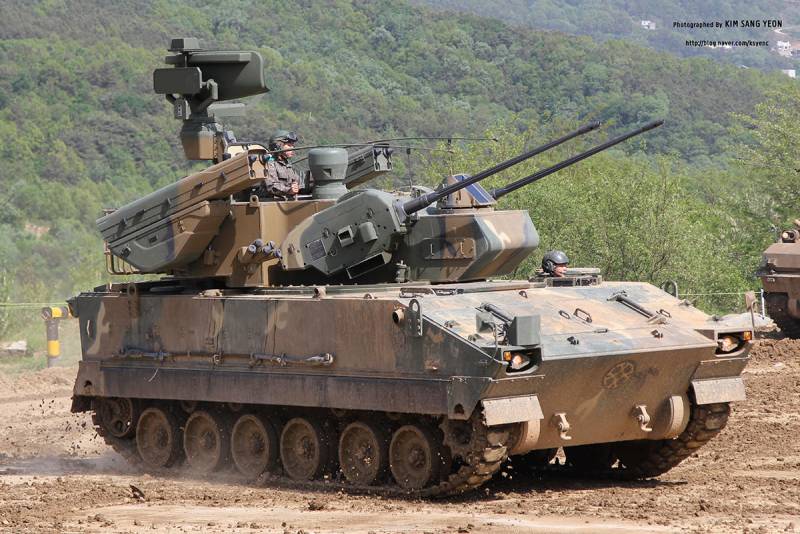
Information